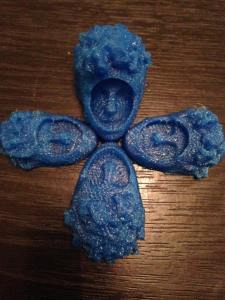After fixing my scan and establishing the shape i wanted, It was time to 3D print my head in big. as big as i can, so i printed the head very large and once that was done i drew sections on it with a sharpie to establish the best way to cast it.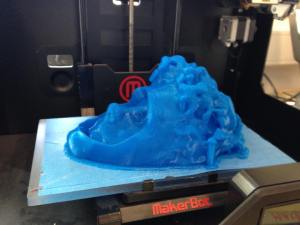
I stuck clay in the sections of my head that had drastic under cuts, i was willing to compromise rather greatly to the cast finished. casting it thick and then sculpting it by hand afterward seemed like a good idea.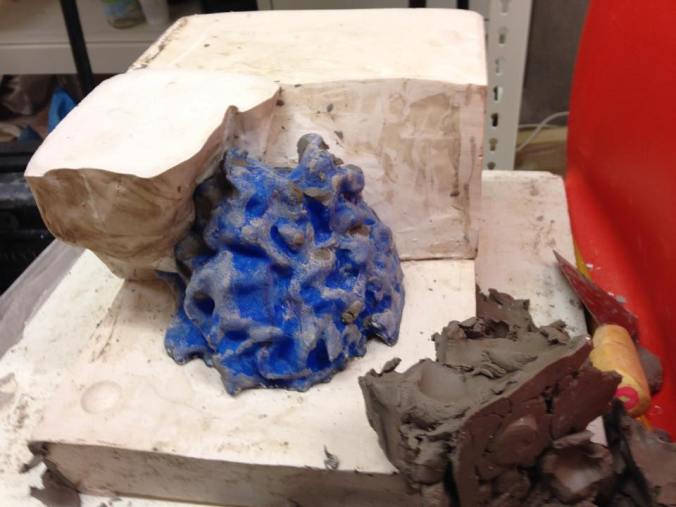
Each piece of the mould was definitely its own challenge. I knew my head would be the hardest which is why i started with it, because i wanted it out of the way.
A few of the parts of the mould failed and i had to recast them and reposition the clay. it took quite a while to complete.
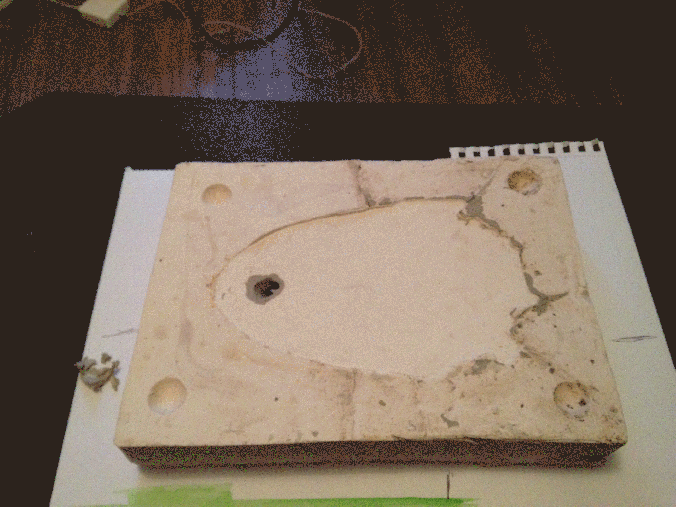 In total the cast was 8 parts.
In total the cast was 8 parts.
Once finished I put it in the drying rack for a few days, considering its size it needed a good few days.
I was now able to cast and test the mould. This was definitely abit tense considering how long the mould took to make. I used regular slip to start and as always the first mould is usually the worst and also going to clean out all the crap inside the plaster.
Good start.
Each part removed revealed a very solid cast.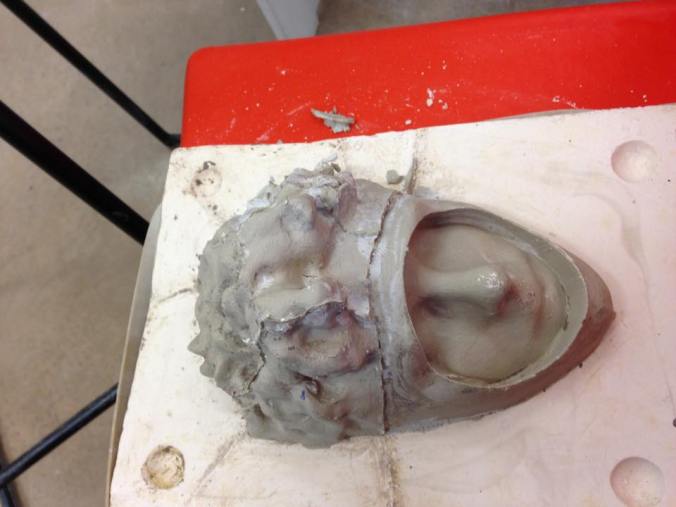
Then finally!
The cast was perfect, it required ALOT of fettling but it was pretty much what i expected.
After a few more casts the mould was cleaning up. So i focused on getting a moderately thick cast and began sculpting into the hair to bring back the undercuts.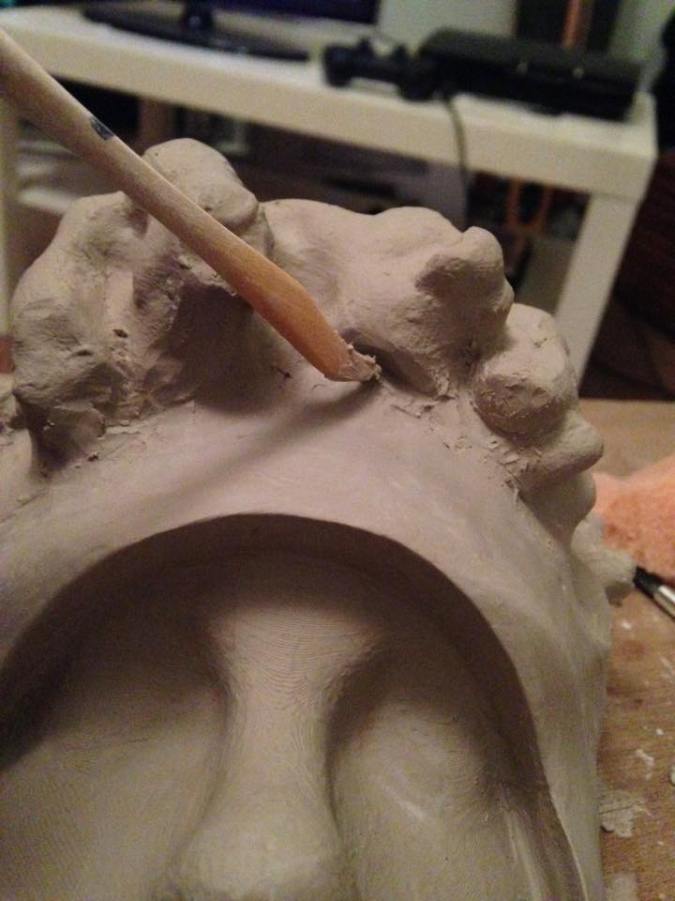
This was certainly pretty time consuming, but was worth it. it definitely improved the overall look and definition of the cast.
The results after making a few..
They seem pretty good. Now to get them fired and glazed so i can gauge the shrinkage.


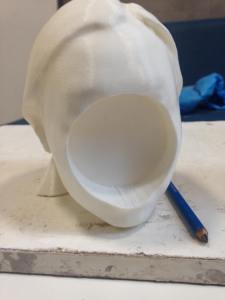

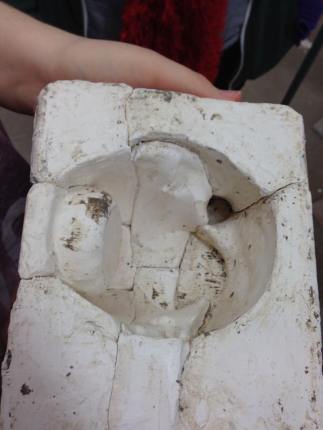
 These processes are new for Danny so he is documenting all of them as he goes which is good because he also records his pitfalls as well as reviews the 3d printers and techniques he uses and learns with in his studio.
These processes are new for Danny so he is documenting all of them as he goes which is good because he also records his pitfalls as well as reviews the 3d printers and techniques he uses and learns with in his studio.
